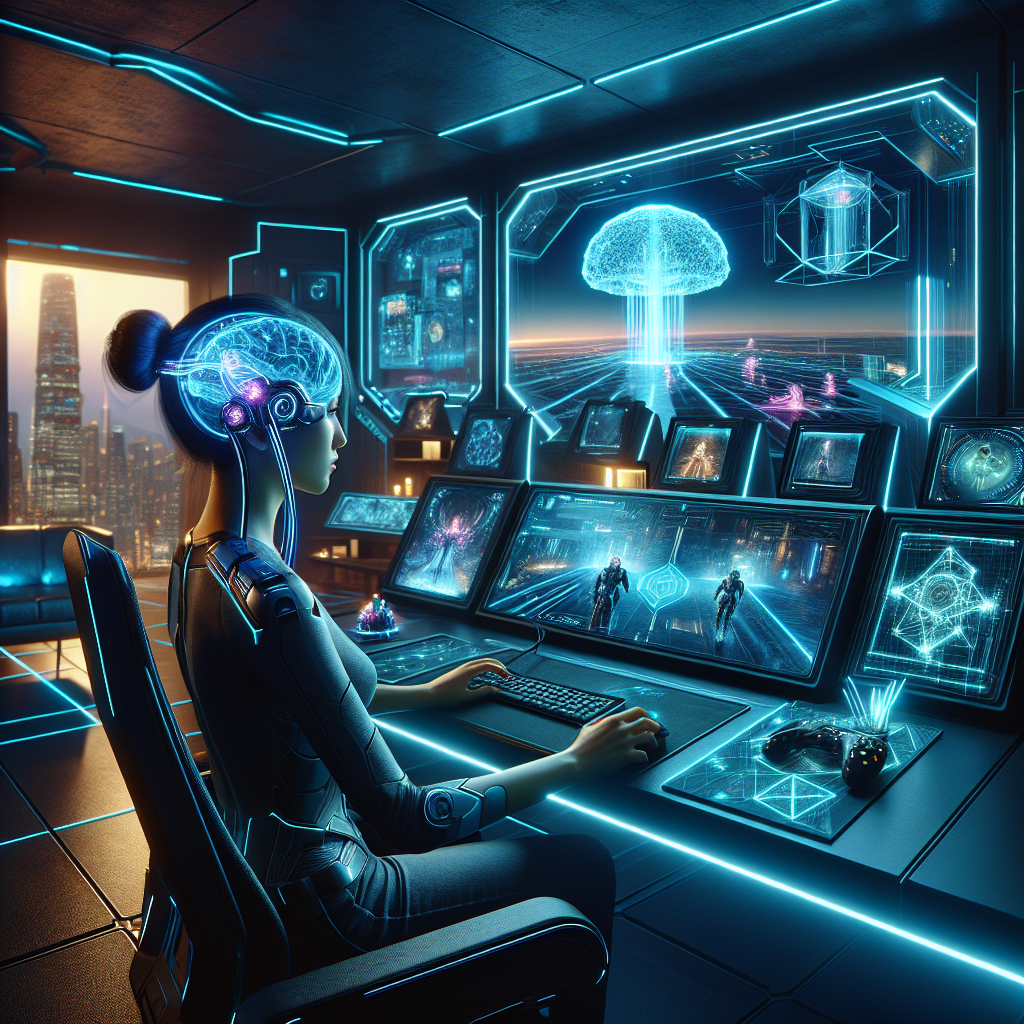Introduction to Brain-Computer Interfaces in Gaming
Imagine controlling a video game using nothing but your thoughts. This isn’t a scene from a sci-fi movie but a soon-to-be reality thanks to advances in brain-computer interfaces in gaming. These technologies, which allow for direct communication between the brain and an external device, are poised to revolutionize the way we play and interact with video games.
The Current State of Brain-Computer Interfaces
Brain-computer interfaces (BCIs) have primarily been developed for medical purposes, such as helping individuals with disabilities to control prosthetic limbs or regain communication capabilities. However, the gaming industry is now looking at BCIs as a way to enhance player immersion and interaction. Companies like Neuralink, co-founded by Elon Musk, are at the forefront of developing technology that could integrate human cognition directly with computers.
Enhancing Immersive Experiences
One of the most exciting prospects of brain-computer interfaces in gaming is the potential to enhance immersive experiences. Virtual reality (VR) and augmented reality (AR) have started this trend by engaging sight and sound, but BCIs could take this to a new level by integrating thought-based controls and feedback. This could mean controlling your avatar just by thinking about moving, or having game environments that adapt based on your emotional responses, captured through your neural data.
Improving Accessibility in Gaming
Accessibility has always been a crucial issue in the gaming community, with developers striving to make games more accessible to people with varying abilities. BCIs could dramatically improve accessibility, allowing players with physical disabilities to control games using their thoughts alone. This technology could open up new worlds for individuals who may not be able to use traditional gaming controllers.
Challenges and Ethical Considerations
While the benefits are significant, there are also challenges and ethical considerations that come with brain-computer interfaces in gaming. Privacy concerns top the list, as using BCIs involves processing sensitive neural data that could potentially be hacked or misused. Additionally, there are concerns about the long-term effects of having devices that interact so closely with the brain. Researchers and developers are working to address these issues, ensuring that safeguards are in place to protect users.
Future Prospects of BCIs in Gaming
The future of brain-computer interfaces in gaming looks promising, with numerous possibilities ranging from fully immersive game worlds to new forms of social interaction within games. As this technology continues to develop, it could also lead to new genres of games that are specifically designed around BCI capabilities, offering experiences that are currently unimaginable.
In conclusion, as we edge closer to integrating brain-computer interfaces in gaming, the potential for transformative changes in the industry is immense. Not only could this technology make gaming more immersive and accessible, but it also poses important questions about the future interaction between humans and machines. It’s an exciting time for developers and players alike, promising a new era of gaming that could redefine the very experiences of play.


